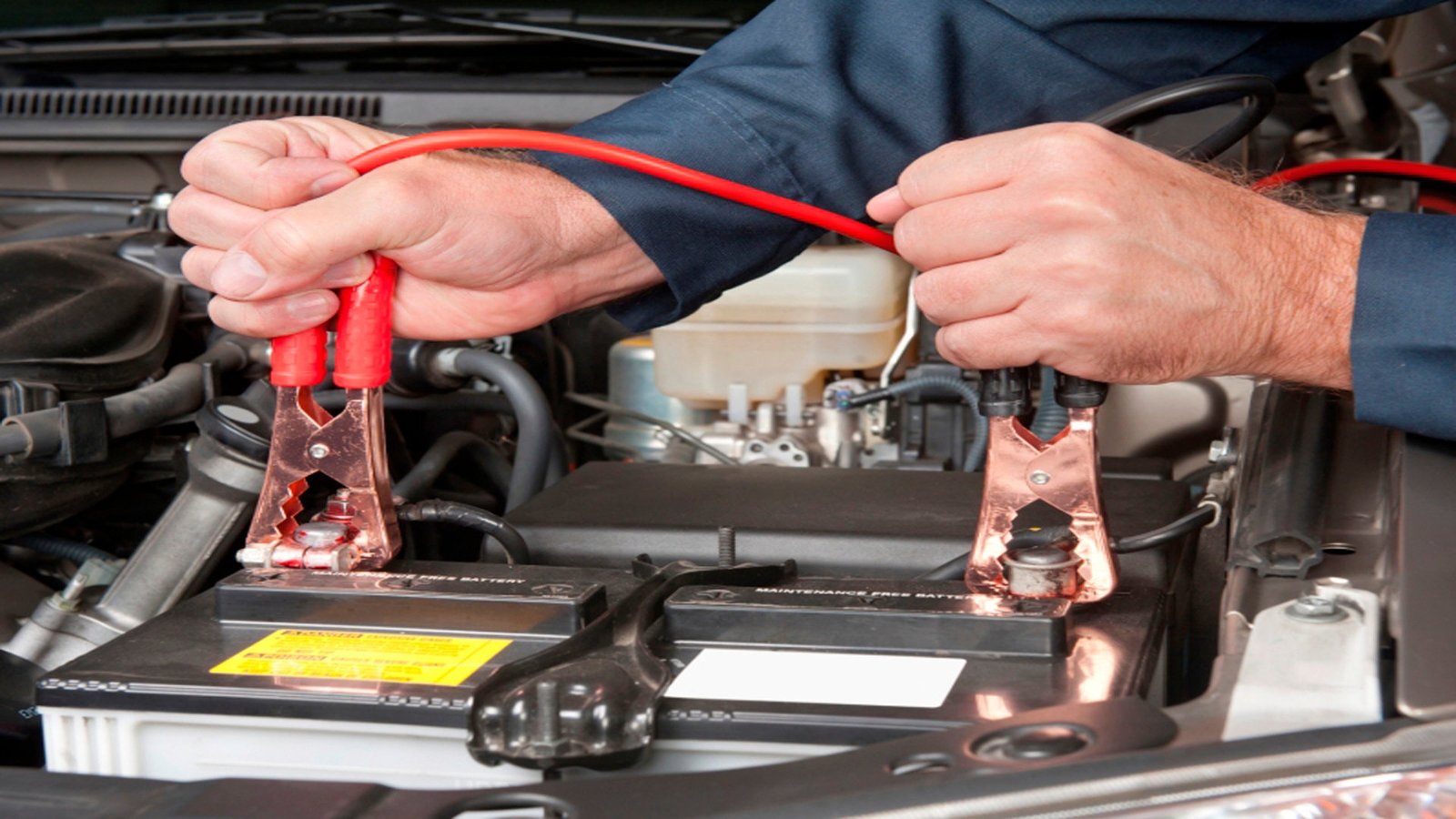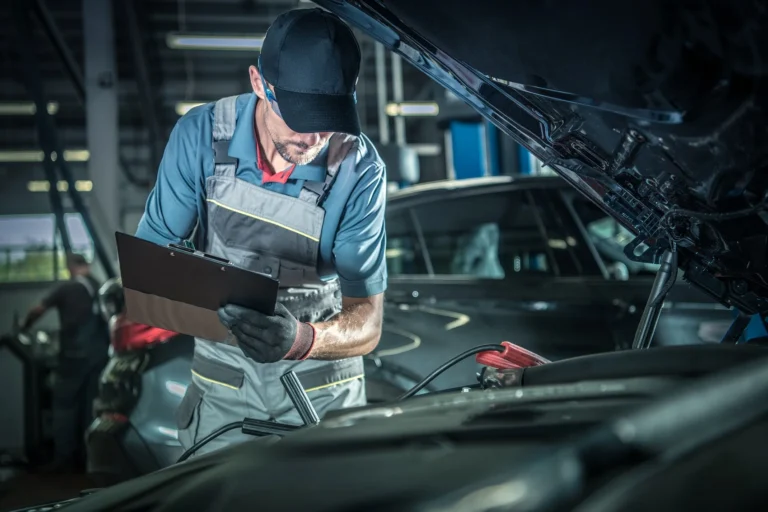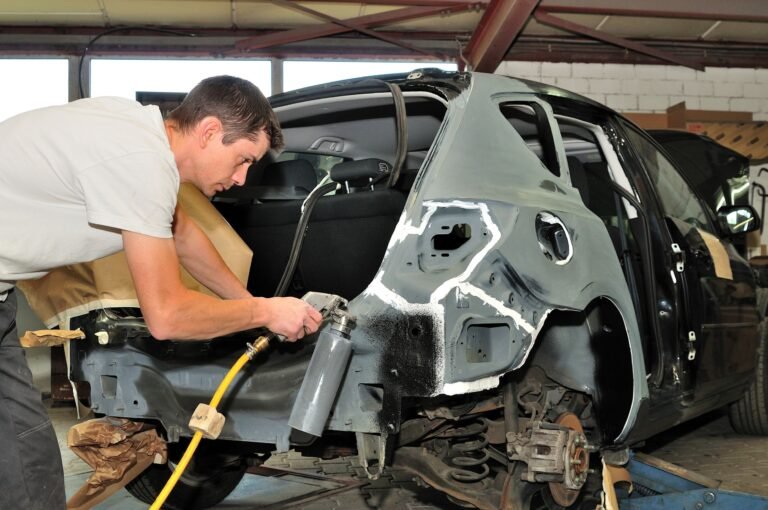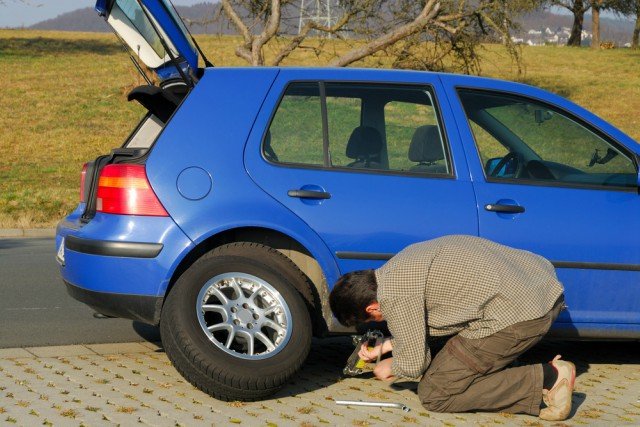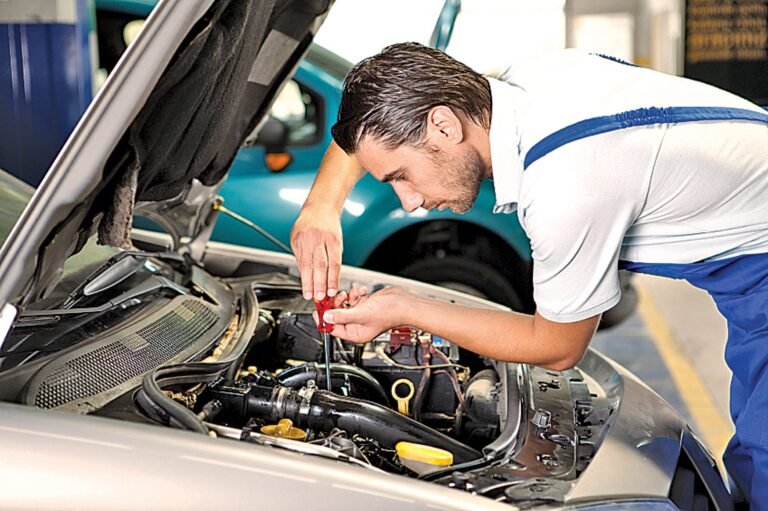The Ultimate Guide To Jump Starting Car With A Dead Battery
Welcome to the ultimate guide on how to jump start car with a dead battery! We’ve all been there – you turn the key in the ignition and instead of hearing that familiar roar, you’re silent. A dead battery can happen at any time, leaving you feeling stranded and frustrated. But fear not, because, with the right knowledge and tools, you can easily get your vehicle up and running again. In this comprehensive guide, we will walk you through each step of safely jump start car. We’ll also provide helpful tips for a successful car battery jump start, how to start the car and share alternative methods if traditional cables aren’t available. Plus, we’ll give you some advice on maintaining a healthy car battery to prevent future mishaps.
So, whether you’re an experienced driver or just starting, keep reading to become an expert at reviving your vehicle’s dead battery. Let’s dive into the world of jump-starting cars!

Before Jump Start Car, Double Check:
Before jump-starting your car, it’s crucial to double check a few things. First, inspect the battery connections to ensure they are clean and tight. Loose or corroded connections can prevent a successful jump start.
Next, examine the battery for any signs of corrosion. If you notice a buildup of white or greenish residue on the terminals, use a wire brush to gently scrub it away. Corrosion can inhibit the flow of electricity and hinder the jump-start process.
Additionally, take a quick look at your jumper cables. Make sure they are in good condition without any frayed wires or damaged clamps. Faulty cables can lead to ineffective or even dangerous jump starts.
By taking these simple steps before attempting to jump start car, you’ll maximize your chances of success and avoid potential hiccups along the way. It’s always better to be safe than sorry when dealing with electrical components!
Checking The Battery Connections For Jump Start Car
Before attempting to jump-start a car with a dead battery, it’s crucial to double check the battery connections. Start by inspecting the terminals for any signs of corrosion or damage. Corrosion can prevent proper electrical contact and hinder the jump-start process. If there is corrosion present, gently clean it off using a wire brush and a mixture of baking soda and water.
Next, ensure that both ends of the jumper cables are securely connected to their respective batteries. The positive (+) terminal should be attached to the positive terminal on both batteries, while the negative (-) terminal should be connected to an unpainted metal surface on both vehicles. Double-checking these connections will help guarantee a successful car battery jump start without any unnecessary complications.
Checking For Corrosion
One important step before jump-starting a car is to check for corrosion on the battery terminals. Corrosion can hinder the flow of electricity, making it difficult to start the vehicle. To check for corrosion, look for a build-up of white or greenish residue on the battery terminals. If you notice any corrosion, it’s essential to clean it off before attempting to jump-start the car.
To clean off corrosion, mix baking soda and water into a paste and apply it to the affected areas with a toothbrush or wire brush. Gently scrub away the residue until the terminals are clean. Rinse with water and dry thoroughly before reconnecting the jumper cables. By checking for and removing any corrosion, you can ensure a strong connection between your battery and jumper cables for an effective jump start service for your car battery.
Checking The Jumper Cables
One crucial step before jump-starting a car is to check the condition of your jumper cables. These cables are essential for transferring power from the working vehicle’s battery to the dead battery. Start by inspecting both ends of the cables for any signs of damage or fraying. If you notice any exposed wires or worn-out insulation, it’s best to replace them with new ones.
Next, make sure that both sets of clamps are clean and free from rust or corrosion. A buildup of grime can interfere with the connection and affect the flow of electricity. You can use a wire brush or sandpaper to gently remove any dirt or oxidation from the clamp surfaces. Additionally, ensure that alligator clips on each end open and close properly so they can securely attach to the battery terminals without slipping off during operation.
By taking a few moments to examine your jumper cables, you’ll be better prepared for a successful car battery jump start when faced with a dead battery situation!
Step-By-Step Instructions For Jump Start Car
Positioning the Vehicles:
1. Park both vehicles close enough so that the jumper cables can reach between them.
2. Make sure both vehicles are turned off and in park (for automatic transmission) or neutral (for manual transmission).
3. Engage the parking brake on both vehicles to prevent any movement during the jump start.
Connecting the Jumper Cables:
1. Open the hoods of both vehicles and locate their batteries.
2. Identify the positive (+) and negative (-) terminals on each battery.
3. First, connect one end of the red jumper cable to the positive terminal of the dead battery.
4. Then, connect the other end of that same red cable to the positive terminal of a working battery.
5. Next, attach one end of a black jumper cable to the negative terminal of a working battery.
Positioning The Vehicles
Positioning the vehicles correctly is crucial when jump-starting a car. The first step is to park both cars close enough so that the jumper cables can reach between their batteries easily. Make sure to turn off both engines and engage the parking brakes for safety.
Next, identify the positive (+) and negative (-) terminals on each battery. It’s essential to connect the jumper cables in the correct order to prevent any damage or electrical shock. Most often, you’ll find these terminals marked with red for positive and black for negative. Once you’ve positioned the vehicles properly, it’s time to move on to connecting the jumper cables and starting up!
Connecting The Jumper Cables
To successfully jump start car, proper connection of the jumper cables is crucial. Begin by locating the positive and negative terminals on both vehicles’ batteries. The positive terminal is usually marked with a (+) sign, while the negative terminal has a (-) sign or is labeled as “GND.”
Next, take one end of the red (positive) jumper cable and attach it to the positive terminal of the dead battery. Then, connect the other end of this cable to the positive terminal of the working car’s battery. Ensure that both connections are secure and tight.
Now, grab one end of the black (negative) jumper cable and attach it to the negative terminal of the working vehicle’s battery. Carefully connect the remaining end of this cable to an unpainted metal surface on your car such as a bolt or bracket away from moving parts and any fuel sources.
Remember that safety should always be your top priority when connecting jumper cables. By following these steps correctly, you can ensure a solid connection between both vehicles’ batteries for an effective car battery jump start without causing any damage or injury during this process!
Starting The Vehicles
Once you have connected the jumper cables correctly, it’s time to start the vehicles. Start by turning on the engine of the vehicle with the good battery. Allow it to run for a few minutes to build up some charge in your dead battery. Then, turn on the engine of the car with the dead battery. If all goes well, you should hear that familiar revving sound and see your dashboard lights come back to life.
Make sure both vehicles are running smoothly before disconnecting anything and be cautious when removing the jumper cables to avoid any sparks or electrical shocks.
Remember, starting a car with a dead battery can put strain on both batteries involved, so it’s important not to rush this process. Take your time and give both engines sufficient warm-up time before continuing onto other steps.
Removing The Jumper Cables
Once your car has been successfully jump-started, it’s important to remove the jumper cables properly. Start by turning off both vehicles and making sure the engine is completely turned off.
To remove the cables, begin with the negative cable (usually black) from the booster vehicle’s battery terminal. Then, remove it from your car’s battery in the same order. Next, move on to removing the positive cable (usually red), starting with the booster vehicle and then yours. Remember to never let any of these cables touch each other or any metal surface during this process.
By following these steps carefully, you can safely disconnect and store away your jumper cables until they’re needed again for another jump start situation.
How To Start The Car: Jump Start
We’ll provide step-by-step instructions for knowing “How to start the car”, as well as offer tips for troubleshooting if your car won’t start.
- Turning The Car On
- Beginning To Drive
- Mastering The Hill Start
- Troubleshooting If The Car Won’t Start
- Vehicle Safety
- Driver Action
Turning The Car On
To turn the car on, insert the key into the ignition and turn it clockwise until you hear the engine start to turn. If your car has a push-button start, simply press the button with your foot on the brake pedal. Make sure all accessories are turned off before starting the car. Now you’re ready to begin your journey!
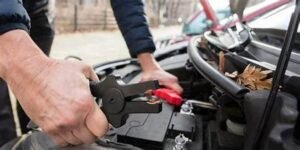
Beginning To Drive
Now that you’ve successfully started your car, it’s time to begin driving. Make sure you’re in a safe location and have adjusted your mirrors and seat before putting the car into gear. Gently release the handbrake if necessary, and slowly press down on the accelerator while releasing the clutch pedal at the same time. Maintain control of the steering wheel as you gradually increase your speed. Keep practicing this process to become more confident behind the wheel!
Mastering The Hill Start
Mastering the Hill Start is a crucial skill for any driver. When starting on an incline, it’s important to use the handbrake and clutch correctly. Here’s how: 1) Push down the clutch pedal while keeping your foot on the brake. 2) Engage the handbrake fully. 3) Gradually release the clutch as you slowly lift your foot off the brake. This technique will prevent your car from rolling backward and ensure a smooth start on hills. Keep practicing perfecting this essential driving skill!
Troubleshooting If The Car Won’t Start
If your car won’t start, there are a few troubleshooting steps you can take. First, check the battery connections to ensure they are tight and clean. If that doesn’t work, try jump-starting the car or replacing the battery altogether. You should also check the starter motor and ignition switch for any issues. Remember to always consult a professional if you’re unsure about what to do next.
Vehicle Safety
Ensuring your safety and the safety of others is paramount when starting a car. Always buckle up before you start driving to prevent injuries in case of sudden stops or accidents. Regularly check that your lights, indicators, and brakes are working properly. Be aware of blind spots and use your mirrors effectively. Remember to always follow traffic rules and regulations for a safe journey every time you start your car.
Driver Actions
When starting your car, it’s important to remember a few key driver actions. First, ensure that you have a clear view of the road and all mirrors are properly adjusted. Next, fasten your seatbelt for safety. Check that your feet are positioned correctly on the pedals before beginning to drive. These simple actions will help you start your car smoothly and safely.
Before You Start Your Car
Before you start your car, it’s important to make sure you’re prepared for the journey ahead. Check that all windows and mirrors are clear of obstructions. Adjust your seat and steering wheel to a comfortable position. Fasten your seatbelt and ensure all passengers are securely restrained. Make sure your key is in hand and ready to go. Take a moment to familiarize yourself with the location of important controls like headlights, windshield wipers, and turn signals. Now you’re ready to start the engine!
How To Start The Car
For knowing “How To start the car”, first make sure you have the necessary keys. Once inside the vehicle, insert the key into the ignition and turn it clockwise until the engine starts to turn. Remember to keep your foot on the brake pedal while doing this. Starting a car is an essential skill every driver should know!
Steps To Jump Starting A Car With Jump Leads
Jump leads a car starting is an essential skill to have in case of a dead battery. It can save you from being stranded and having to call for roadside assistance. While it may seem intimidating at first, the process is actually quite simple if you follow these steps.
First, gather all the necessary equipment: a set of jump leads and another vehicle with a charged battery. Park both cars close enough so that the jump leads can reach between their batteries, but make sure they are not touching each other.
Next, turn off both vehicles and open their hoods. Locate the positive (+) and negative (-) terminals on each battery. The positive terminal will usually be marked with a plus sign or red cover, while the negative terminal will have a minus sign or black cover.
Now it’s time to connect the jump leads. Start by connecting one end of the red lead to the positive terminal of your dead battery. Then connect the other end of the red lead to the positive terminal of the working battery.
Tips For A Successful Jump Start
To ensure a successful jump start, there are several key tips to keep in mind. First and foremost, after connecting the jumper cables, let the dead battery charge for a few minutes before attempting to start the vehicle. This allows some power to flow into the dead battery and increases your chances of a successful car battery jump start.
Another important tip is to check the alternator after jump start car. The alternator is responsible for charging the battery as you drive, so if it’s not functioning properly, your newly charged battery may quickly lose power again. Use a voltmeter or take your car to a car mechanic near by me to test the alternator and ensure it’s working correctly.
Remember that driving your vehicle can help maintain the charge in your battery. Take it for a spin or go on a short drive once you’ve successfully jump started it – this will give your battery an opportunity to recharge fully.
By following these tips, you’ll increase your chances of successfully jump start car without any issues. So next time you find yourself with a dead battery, remember these helpful suggestions!
Letting The Dead Battery Charge
Letting the dead battery charge is an important step after jump-starting your car. Once you have successfully started the vehicle, allow it to run for at least 15-20 minutes. This will give the alternator enough time to recharge the battery.
During this charging period, avoid using any unnecessary electrical accessories. Like headlights or air conditioning, as they can put additional strain on the already weakened battery. Instead, focus on driving at a moderate speed and allowing the engine to generate power for both it and the battery.
By letting the dead battery charge properly after a car battery jump start. You are giving it a chance to regain some of its strength. Remember that this is only a temporary fix and it’s crucial to address any underlying issues with either the battery or alternator as soon as possible.
Driving The Vehicle To Maintain The Charge
Once you have successfully jump-started your car and gotten it running again, your job is not quite done. To ensure that the battery continues to charge and regain its full power, it’s important to drive the vehicle for at least 20 minutes or more. This allows the alternator in your car’s engine to kick into gear and recharge the battery fully.
During this time, try to avoid using any unnecessary electrical components such as air conditioning or high-powered radio systems. These can place an additional strain on the battery and prevent it from charging properly. Keep in mind that driving at higher speeds also helps generate more power, so consider taking a short highway trip if possible.
Remember, driving after jump-starting is crucial for allowing your vehicle’s charging system to do its job effectively. By giving it enough time on the road, you’ll be ensuring that your battery regains its strength and avoids future dead-battery mishaps. So don’t rush back home immediately after jump-starting; take some extra time behind the wheel for a successful rejuvenation of your car’s power source!
Additional Methods Of Jump Starting A Car
Using a power bank jump starter is another option for jump start car with a dead battery. These portable devices are compact and convenient to carry around in case of emergencies. Simply connect the jump starter to the terminals of the dead battery, following the manufacturer’s instructions, and then start your vehicle. This method eliminates the need for another vehicle and jumper cables.
If you’re not comfortable or confident in jump-starting your car yourself, seeking professional assistance is always an option. Call a roadside assistance car jump start service or contact a professional car mechanic near me who can safely and efficiently get your car up and running again. They have the necessary tools and expertise to handle any issues that may arise during the process.
Remember, it’s important to choose a method that works best for you based on your situation and preferences when it comes to car battery jump start with a dead battery.
Using A Power Bank Jump Starter
Using a power bank jump starter is another convenient method to jump-start your car with a dead battery. These portable devices are compact and can easily be stored in your glove compartment or trunk. Simply connect the power bank jump starter to the battery terminals, following the instructions provided by the manufacturer. Once connected, start your vehicle as you normally would, and the power from the jump starter will provide enough energy to get your engine running again.
One of the major advantages of using a power bank jump starter is that you don’t need another vehicle for assistance. This makes it especially useful if you find yourself stranded in an isolated area without any other cars around. Additionally, these devices often come with additional features. Such as built-in flashlights or USB ports that allow you to charge your electronic devices on-the-go. However, it’s important to ensure that your power bank jump starter is fully charged before relying on it in an emergency situation.
Seeking Professional Assistance
If you’re not comfortable or confident in jump start car yourself, it’s always best to seek professional assistance. A qualified mechanic or roadside assistance battery jump start service near me can safely and efficiently help you get your vehicle back on the road. They have the expertise and equipment needed to diagnose any underlying issues with your battery or electrical system.
When you call for professional help, make sure to provide them with all the necessary information about your location and the type of vehicle you have. This will help them arrive prepared with the right tools and knowledge. Remember, their priority is your safety, so don’t hesitate to reach out if you’re unsure about car battery jump start on your own.
Calling for roadside assistance takes away the stress of attempting unfamiliar methods or risking damage to your vehicle. It ensures that experienced professionals are handling the situation efficiently while prioritizing safety. So, if you’re unsure about how to start a car with a dead battery or feel uncomfortable doing it yourself, don’t hesitate to reach out for expert help!
Maintaining A Healthy Car Battery
Maintaining a healthy car battery is essential for ensuring your vehicle starts reliably every time. Regularly checking and cleaning the battery terminals can help prevent corrosion and ensure good electrical connections. Additionally, parking your car in a garage or shade can protect the battery from extreme temperatures that can affect its performance. Using battery maintainers or tenders when your vehicle is not in use can also help keep the battery charged and extend its lifespan. By following these simple steps, you can prolong the life of your car’s battery and avoid unexpected dead batteries in the future.
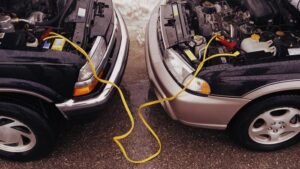
Regularly Checking And Cleaning The Battery
Regularly checking and cleaning the battery is essential for maintaining its health and prolonging its lifespan. Start by inspecting the battery terminals for any signs of corrosion or buildup. Use a mixture of baking soda and water to scrub away any residue, ensuring a clean connection. Additionally, make sure the battery is securely fastened in place to prevent vibration damage. Regular maintenance like this can help prevent potential issues and keep your car running smoothly.
In addition to cleaning, it’s important to regularly check the overall condition of your car battery. Look out for any cracks or leaks that could indicate internal damage or electrolyte leakage. If you notice anything unusual, it may be time to replace your battery. By proactively checking and cleaning your battery, you can ensure optimal performance and avoid unexpected breakdowns on the road.
Parking In A Garage Or Shade
Parking in a auto garage near me or shade is an effective way to maintain the health of your car battery. When exposed to extreme temperatures, especially heat, batteries can drain faster and lose their charge. By parking in a covered area, you provide protection from direct sunlight and help regulate the temperature around your vehicle.
Garages offer the most ideal conditions as they provide complete coverage from both sun and rain. However, if a garage is not available, look for shaded areas such as under trees or large structures. Even just a little bit of shade can make a difference in preventing excessive battery drain due to heat exposure. So next time you park your car, consider finding a shady spot or utilizing your garage to keep your battery at its best!
Using Battery Maintainers Or Tenders
Maintaining a healthy car battery is crucial for preventing dead battery situations. One effective method is to use battery maintainers or tenders. These devices are designed to keep your battery charged and in good condition when the vehicle is not in use.
Battery maintainers work by supplying a small amount of current to the battery, which helps prevent self-discharge and sulfation. They are easy to use – simply connect the maintainer to your car’s battery and plug it into an electrical outlet. The device will then monitor the charge level and automatically provide power as needed.
Using a battery maintainer regularly can extend the lifespan of your car’s battery. Ensuring that it remains reliable for longer periods between drives. It also eliminates the need for jump-starting or replacing dead batteries frequently. Invest in a quality battery maintainer or tender to keep your car’s electrical system running smoothly even during extended periods of non-use
Conclusion
Maintaining a healthy car battery is crucial for ensuring that your vehicle starts reliably every time. However, there may be instances when you find yourself with a dead battery and in need of a jump start. By following the step-by-step instructions outlined in this guide, you can safely and effectively jump start car.
Before attempting to car battery jump start, it’s important to double check the battery connections, look for any signs of corrosion, and ensure that the jumper cables are in good condition. These simple checks can prevent any further damage or accidents during the process.
When jump start car, make sure to position both vehicles properly and connect the jumper cables correctly – positive to positive and negative to negative. Start the vehicles and let them run for a few minutes before removing the cables.


